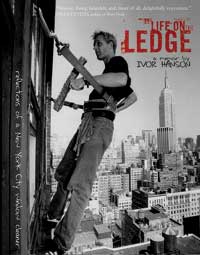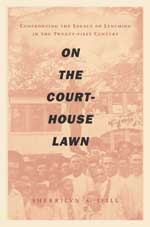Books Noted

By Ivor Hanson ’88
Two Dollar Radio, 2006
Ivor Hanson ’88 spends his days high above the city streets of New York. But he isn’t inside a conference room in one of the many skyscrapers in the city; Hanson is on the outside washing windows. Hours upon hours of hovering outside buildings afford Hanson the time to reflect on where he has been and where he wants to go. In his new memoir, Life on the Ledge, Hanson looks back to his days of playing and touring with punk bands in the 1980s — and his dream of being a rock star — and contemplates his next step. Along the way, he recounts stories about his unusual profession — the celebrities whose windows he has peered through and the famous landmark buildings of New York City itself. Life on the Ledge is a tale of risk, punk music, voyeurism, identity — and clean windows. — S.S.

By Sherrilyn A. Ifill ’84
Beacon Press, 2007
University of Maryland Professor of Law and Civil Rights Attorney Sherrilyn Ifill ’84 explores the history of lynching in America in her new book On the Courthouse Lawn. By focusing on the lingering effects of two lynchings in Maryland, Ifill illustrates how this racial trauma still echoes in today’s world. What remains in many local communities is a lack of dialogue or acknowledgement of this history. Few, black or white, want to remember these events. But Ifill goes beyond just remembering this period of America’s history. She looked to South Africa’s Truth and Reconciliation Commission for inspiration in offering ways blacks and whites can bridge the divide within their communities. Suggestions such as placing gravestones on unmarked burial sites of lynching victims, establishing mandatory school programs on the local history of lynching, and creating commemorative public spaces are just some of the ideas Ifill puts forth in the book. This is “an intriguing, immodest proposal that itself warrants discussion — and action,” as described in a Kirkus starred review of the book. — S.S.
The Adventures of Michael MacInnes
by Jeff Carney ’84
Farrar, Straus and Giroux, 2006

What they have in common is a taste for adventure and willingness to flout authority to get it. But whereas MacInnes has literary ambitions (and likes girls), Legrande dreams of building flying machines (and does not).
Carney adeptly captures the period, not only through historical accuracy and detail, but through a lightness of touch. MacInnes is a poor orphan who, through his scholarship — and despite his less-than-scholarly excesses — earns his way into the academy. Although out of his class in many ways, he holds his own academically. His objectives: to have his poetry published in Stoney Batter’s Review, to make a name for himself, and, like the other misfits who become his constant companions, to be accepted.
More background about MacInnes’ days in the orphanage may have bolstered the character’s credibility as literary wunderkind. Further, as many topics some may consider too controversial for the youth market are freely addressed here, such as alternative views of faith and what our generation has dubbed alternative lifestyles, MacInnes may well find itself in the company of Catcher in the Rye and other books often banned for fear of their corrupting influence. But never mind that. This reviewer willingly suspended his disbelief to behold this protagonist, who now joins Holden Caulfield, Stephen Dedalus, and other prep school lads in the popular imagination. — Mitch Fox ’84

By Bronwen Pardes ’95
Simon & Schuster Children’s Publishing, 2007
“Why do I think it’s so important to teach teens about sexuality?” asks sexual-health educator Bronwen Pardes ’95 in her book Doing It Right, written for ages 14 and up. “Sex is such a vital part of who we are, and teens are at an age when they’re just starting to figure it all out. Some of the choices [they] make now could stay with [them] for…life, which is why it’s important that they be well-informed and well-thought-out.” In the book, Pardes covers essential information about sexually transmitted diseases and how to practice safer sex; she also delves into the ethics and emotions that can accompany being sexually active. Pardes answers real questions from teenagers — tackling such subjects as puberty, sexual orientation, and sexual abuse. What sets this book apart from others like it is that in every chapter, Pardes speaks to all teens — male or female, gay or straight. — S.S.
Edgar Allan Poe & the Juke-Box: Uncollected Poems, Drafts, and Fragments
By Elizabeth Bishop
(edited and annotated by Alice Quinn)
Farrar, Straus and Giroux, 2006

Issues of morality aside, the collection is a fascinating and personal look at a very secretive woman. Through it, Bishop’s readers have an opportunity to try to see the world as she did, able then to turn to her complete works with a greater understanding and appreciation for what went into creating them. — A.B.
